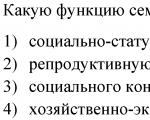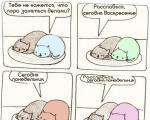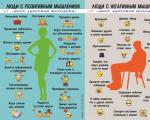Spain New Year celebration. Christmas and New Year traditions in Spain
New Year is a holiday that is awaited with great impatience and hopes for happiness by millions of people. For some, this is an occasion to get together with the whole family, for some - to see old friends, for some, customs and traditions are important. The holiday is loved all over the world. What can we say about the people of Spain - emotional, hot, sensual, cheerful. The traditions of the New Year in Spain can simply amaze an ignorant person, unfamiliar with the culture of the country. Carnivals, processions, festivals, all kinds of events - this is a kind of lifestyle for the people of this country, they cannot live without fun. The New Year in Spain is no exception. Traditions, customs, we now consider.
About the holiday in general
The winter period of carefree fun here begins on December 25th. This year they celebrate Christmas. The holidays last for 12 days, until the Day of the Magi (January 6). Each of these dates has its own traditions. Adults and children are waiting for the New Year in Spain, because this is an occasion to have fun from the heart, and not at home watching TV, as is customary with us, but on the streets of the city. On this day, you will not get into any theater or cinema, everything is closed here. It is believed that everyone should be on the streets as much as possible.
Tree or flower?
Sometimes the traditions of the New Year in Spain seem even a little ridiculous. For example, we associate this holiday with a Christmas tree - beautiful, big, dressed up. However, many Spaniards do not perceive this evergreen miracle as a symbol of the New Year. For these purposes, they have a flower - poinsettia (Flor de Navidad). Its flowering time, as a rule, falls on Christmas, and the bracts are star-shaped. Many residents call it Star of Bethlehem". Yes, do not be surprised, because we have just begun to discuss the traditions of the New Year in Spain. You will find out more and more.
Of course, such a love for poinsettia does not mean at all that there are no Christmas trees here. They are in the houses, and on the streets, and in the central squares. Even if family or friends gathered at the table that day, after the meal they simply have to go outside and celebrate the New Year there. In Spain, such traditions appeared largely due to the warm climate, otherwise they would hardly have been maintained for many years. Well, who wants to be cold?

Where without Santa Claus?
In Spain, his name is Olentzero. He is always dressed in which he is sewn and decorated by hand. It is almost impossible to see it without a flask of excellent locally produced whiskey in hand. The traditions of the New Year in Spain for children, of course, are associated with a bearded grandfather. He also brings gifts. It just leaves them not in socks that are hung from the fireplace, and not under beautiful Christmas tree, but on the most ordinary windowsill. IN festive morning children find sweets, souvenirs and other things there pleasant trifles.
Festive table
Regarding this part of the holiday, there are special traditions of the New Year in Spain. The photos posted in our article will help you better feel the whole atmosphere, at least mentally visit Spain in solemn days. As we have already said, before entering the streets of the city, people sit down at a richly laid table. For such a holiday, they cook and traditional dishes, and your favorite dishes. This is an appetizer of melon with jamon, and tartlets with all kinds of fillings. Tables are usually full of fish and seafood. Naturally, a full-fledged holiday is impossible without a mass of sweets - cumin cookies, pies, almond cakes. Also, a bottle of very high-quality wine must be on the table, because it is not for nothing that Spain is famous for winemaking all over the world. As you can see, in terms of a magnificent feast and richly laid tables, they are very similar to our New Year traditions in Spain. Briefly describe all the delights of the holiday in this country is almost impossible. But still we will try to describe the main, most significant points.

New Year Traditions in Spain
On English language little is said here, although on this day you can hear such congratulations, songs. There is another tradition in these parts that is alien to us. As you already know, after a homemade feast, people gather to continue the fun on the streets of the city. While some dance and sing, others meet at the church and for several hours remember all the significant events of the outgoing year. Then carried out fun competition among young people. They write the names of all those present on pieces of paper, throw them into a bag and pull them in turn. In this way, “couples in love” are formed for the whole day. Although this is a joke, they must still behave all night as if they had loved each other for a long time.

What happens at midnight?
As soon as the clock marks the beginning of the New Year, all those gathered in the city square begin to hug, kiss each other, congratulate, even some give pleasant little things to complete strangers. It looks very cute and at the same time solemn when completely strangers act like relatives best friends. After that, the real ones begin. festivities with crackers, round dances, songs, fireworks.

12 grapes
This tradition has its roots in the distant times of the Spanish kings. If for last year the grape harvest in the country was very good, the kings ordered their subjects to distribute it in all the streets to all the townspeople in any quantities. Today, between the strokes of the clock, there are 3 seconds during which you need to have time to eat a grape, for a total of 12 berries. Only the bones must be spit out before the clock ends. Grapes for the Spaniards are a symbol of wealth, prosperity, well-being. It should be present on the festive table, in the baskets of those people who go to the square to have fun. That is, during the fight of the clock, you cannot be left without a vine in your hands - Bad sign. Even if you are celebrating a celebration in a restaurant, you will definitely be served in right moment 12 berries without twigs in polyethylene.
Buy red underwear
This tradition was born relatively recently in Spain. For the coming year to be successful in all aspects, in holiday night it is necessary to wear red underwear (panties, garters, socks, etc.).

What else is going on interesting?
If on the eve of a holiday in this country you decide to go on a visit, be sure to take a piece of nougat with you as a present and
If guests come to you, do not forget to prepare special gifts in advance - handbags, which are called cotillions. As content, you need to place holiday paraphernalia in them - Balloons, serpentine, masks, musical horns, etc. You can open them only after the clock has struck. It turns out that the owners of the house are guaranteed to get a cheerful and noisy holiday.
Beautiful country, the warmest in Europe. It is here that the most incendiary, cheerful, cheerful people. By purchasing tours to Spain for the New Year 2018, you will see carnivals, various festivals, concerts, large-scale events right on the streets of the country. The Spaniards celebrate the New Year open sky on a grand scale, as they are madly in love with the holidays. Celebrations in the country begin on December 25. In Spain, the locals new year's eve called "Old Night". For this holiday, they carefully prepare. Of course, you are unlikely to see snow here, but you will admire other sights that you will remember for a long time and leave unforgettable emotions. Tired of celebrating the New Year in front of the TV screen with a cup of Olivier, then go travel to fairyland Spain.
New Year traditions of the Spaniards
The Spaniards have an ancient and very beautiful tradition: while the chimes are striking, twelve grapes must be eaten, one with each chime. This ritual can be performed in the square of any city in the country where there is a huge clock. Grapes for the Spaniards symbolize wealth and prosperity.
Well, what is the New Year without a Christmas tree? But the Spaniards prefer the poinsettia flower more than this tree. The fact is that this unusually beautiful plant blooms on Christmas Eve and therefore many local residents New Year is associated with this flower.
As in other countries, the children of Spain believe in Santa Claus, they only call him Olentzero. This is the same grandfather with a beard, only in the traditional spanish clothes and whiskey in hand. Olentzero leaves gifts not in shoes, but on the windowsill.
On the festive table there are various seafood and fish dishes, pies, tartlets, sandwiches, cumin cookies, almond cakes and much more, which are prepared by the housewives with all their hearts. Be sure to have a good tasty wine on the table, as Spain is famous for its winemaking.
Young people tend to wear red outfits and masks. It is believed that this color symbolizes good luck.
At midnight, people in the squares congratulate each other on the holiday. Even a stranger can give you a small trifle as a present. Here is such a friendly and hospitable people in Spain.
Where to go during the New Year holidays?
Choosing New Year tours in Spain you can visit the main square of Madrid Puerta del Sol and Plaza Mayor. For spiritual relaxation, you can choose the Prado National Museum, which contains about 60,000 paintings. If you like to visit museums, then in them great amount. Among them are the famous Reina Sofia Museum, the National Archaeological Museum and others. Many will be surprised, but tourists go in droves to the Atocha railway station for an excursion. The fact is that on the territory of the station there is a chic greenhouse, in which there are many species of tropical plants.
With children, you can visit the zoo and the aquarium. However, this pleasure is not cheap. The cost of an adult ticket is 23 euros, a child ticket is 18.5 euros.
Prices for New Year tours to Spain 2018
It is practically impossible to find one for the New Year, so you need to take advantage of the early booking promotion. These actions are needed in order to save your finances and spend them on right direction. You can also choose the hotel or apartment that suits you best and is close to historical sites. The cost of a tour for two for a week will cost you about 70,000 rubles. Accommodation in a three-star hotel, meals and excursions are included in the tour price.
Spaniards love to eat! This is inherent in their cheerful and cheerful Mediterranean character. Can you imagine how much Spanish families eat during the two and a half weeks of the Christmas holidays! What do modern Spaniards eat on Christmas and New Year? The main and most traditional in these holidays- a wide variety of sweets. In the first place, of course, turron! Turron is a cross between halvah and nougat, a typical oriental sweetness left to us by the great Moorish civilization ... There are a lot of types of it: hard (turr?n de Alicante), reminiscent of familiar kazinaki, and soft (turro?n de Xixona), more like ordinary halva, chocolate, with candied fruit, etc. The traditional turron is made in the city of Gijón in the province of Alicante. Its basis is honey (sometimes with added sugar) and peeled and fried almond nuts. Candied almonds - these white egg-shaped sweets are another favorite Christmas treat for the Spaniards! Polvoron - crumbly biscuits in glaze or in powdered sugar, marzipans, all kinds of cupcakes, macaroons, chocolate-nut sweets and, of course, a variety of dried fruits - dried apricots, dates, figs ... This is not complete list of all the sweets that Spaniards eat at Christmas! They also prepare their favorite desserts: arroz con leche - sweet rice porridge with cinnamon and lemon, chocolate mousse, truffles, catalan cream - like our custard, but with caramel ... In short, sweethearts in Spain - grace! But, it's time to move on to the main dishes of Christmas ... For the last 20 years, a tradition has appeared in Spain: shrimps are always present on the Christmas table ( different types, but always large), lobsters, lobsters... Shrimps are served cold with lemon or grilled, as a salad with pink sauce or a cocktail with aguacat! Lobsters and lobsters are eaten as a hot dish, usually with rice. Oysters, crayfish, mussels are very frequent guests on the festive table. One of the hot dishes, as a rule, is fish - sea bream baked with lemon or grilled sea perch, whiting in shrimp sauce or salmon on the coals - there are a myriad of options! One of the typical ingredients of a Christmas feast is a turkey stuffed with vegetables, nuts, apples, or simply baked in the oven! Instead of a turkey, there may be a poulard - a tender young hen or chicken. Game is accompanied by vegetable salads, baked or fried potatoes, etc. Very popular during the winter holidays - suckling pig, stuffed or baked, fried on a spit or on coals. The Spaniards also love to gnaw on well-fried lamb ribs! There you are, sample menu if you want to celebrate the New Year in Spanish! Do not forget to put on the table champagne, red and white wines, cider, beloved in the north of Spain - and go! Enjoy your celebration, dear friends!
Hello, friends! Are you ready for the holidays? The pace of people's lives in the New Year's weeks increases: everyone seeks to solve problems and pending cases in order to meet the New Year with a calm heart. Every second woman is now busy convulsively compiling a menu for the New Year's table. You wrote a meter list necessary products? Did you manage to prepare gifts and decorate the Christmas tree? Take a break and find out how the Spaniards celebrate the new year, what Spanish looks likefestive tableAnd how is the celebration. After reading the article to the end, you will change your idea of how to spend New Year's Eve and find out what they are preparing for the new year in Spain!
How do the Spaniards celebrate?
New Year (Spanish: Año Nuevo) ) for residents of Spain main holiday in the year - takes the place of the main Catholic Christmas, which is celebrated in the circle of family, relatives and friends. Therefore, after a short feast, the Spaniards go outside, gather en masse in the squares, dance, sing and treat each other with sweets. All celebrations are televised.
The Spaniards are a cheerful nation and their traditions are cheerful. The main New Year's tradition is eating grapes to the sound of chimes (read more), one grape for each beat. Such a quick snack should be finished with the last strike of the clock and then you will be lucky and happy all next year. The celebration of New Year's Eve is accompanied by fireworks, and the municipalities are trying to arrange musical performances. After midnight older generation slowly return home to champagne (called in Spanish " Cava" ) and a set table, and young people go to dance in clubs and places of entertainment.
New Year's menu in Spanish
Features of Spanish cuisine are the abundance of meat and fish dishes, shrimp, mussels, all kinds of seafood. On the New Year's table there will definitely be grapes - a symbol of good luck and fertility (at the same time, tangerines also disappear from store shelves in a matter of hours long before the new year).
Before the holidays, whole "Christmas trees" from the legs of jamon, a raw-dried pork ham (a famous Spanish delicacy), begin to appear in stores. With the participation of jamon hams, they even collect Christmas gift sets.


Click image for a larger view


Click image for a larger view
Olivier will?
Russian New Year's table looks incomplete without two or three salads. By the way, in Spain they are very fond of the so-called "Russian salad" (Spanish. Ensaladilla rusa ), it can be found in supermarkets, ordered in bars and restaurants. Experiments with Russian salads have given rise to many recipes, but tuna, boiled potatoes and eggs remain essential ingredients, mayonnaise or natural yogurt. There are recipes with the addition pickled cucumber, tomato, carrots, olives, sweet canned peppers. Russian salad is served as in traditional form, and in combination with tartlets.


A separate place is given to sweets - this is a paradise for the sweet tooth! main attribute holiday table and all Christmas and New Year holidays are a kind of kozinaki - "turron" (Spanishturron, Catalan torroor Italiantorrone). It is made from nougat, honey, sugar, roasted almonds with the addition of other nuts and now has a lot of variations.
The first recipes for turron are found in the Spanish “Guide for Women”, dated to the 16th century.
Also in the Canary Islands they simply adore desserts:Canarian milk pudding (Spanish: leche canaria) and almond cream(Spanish bienmesabe).


Click image for a larger view


Click image for a larger view


Click image for a larger view
Now you can arrange New Year's Eve in spanish style. Prepare an unusual version of Olivier - "Russian salad" with tuna, add more fish dishes, seafood, meat and cheese cuts to the table. Focus on fruits and sweets, cook. For even more fun, grab 12 grapes for each person at the table and have a eating contest to the sound of the chimes. Don't sit too long at the table, have a dance, go outside or have an active New Year's contests. Such fun is sure to be remembered for the whole year!
Dear friends, we want to congratulate you on the coming New Year and wish you successful projects and big victories! Stay with us, subscribe to blog updates and our new year wishes come true too! See you in the new year!
For the Spaniards, the New Year is noisy and fun party. By dressing in all red, you guarantee yourself that in next year good luck awaits you. Spaniards love New Year's festivities so much that cinemas and theaters do not work during the holidays, so that every Spaniard can go outside and have fun there. Therefore, it is preferable to celebrate the New Year in in public places rather than sitting at home at the table. In Spain there is no problem with entertainment - divination, fireworks and dancing always accompany this holiday. Many Spaniards use special flowers in the form of a Christmas star - poinsettia, which blooms just before Christmas, to decorate their homes. Confetti, sweets and sweets are generously scattered on the streets, so that it is clear to every walker that everything bad remains in the outgoing year.

chief actor on new year holiday is Olentzero, which is significantly different from other Santas. First, he is wearing National Costume, secondly, instead of a bag with gifts in his hands, he has a bottle of wine, and, thirdly, children find gifts on window sills, and not in shoes or socks. However, it also brings fun to the holiday.

Keeping up with other Europeans, the Spaniards prefer to celebrate the New Year together with the street, city and country. The perfect place can become the central square where the Spaniards gather. It is there, under the beat of the clock, that you need to swallow 12 grapes and spit out the seeds before the last blow of the clock is heard, then all 12 wishes that you make while swallowing the berries will come true. In old cities, city dwellers may begin to remember the whole last year summing up and giving a start to the new year. And at this time, young people, by pulling names out of the bag, form couples for the whole New Year's Eve, which can then develop for the rest of their lives. You can also give a traditional bag with gifts - "cotillion", which must be opened in the first minutes of the new year. The content of the cotillion is quite traditional - balloons, Carnival masks, serpentine and confetti, but it does not become less expected and brings real pleasure.

The Spaniards are happy to walk all New Year's Eve, because they only go to work on January 6th. Before going to work on January 5, the Spaniards celebrate the Night of the Magi, which is a continuation of New Year's festivities. On this day, it is also customary to give gifts, as well as pay tribute to the camels of the Magi, leaving refreshments in the form of hay and water in the yard and on the balconies. And, of course, carnivals and festivities accompany this holiday. How the Spaniards go after such a busy vacation, only they know!




